Photography was commercially introduced in 1839, a date generally accepted as the birth year of practical photography. Since then pictures that have been taken have both shocked and inspired us as individuals and as a nation. Following are some of these images.
1. The 1906 San Francisco earthquake

The 1906 San Francisco earthquake struck the coast of Northern California at 5:12 a.m. on April 18 with an estimated moment magnitude of 7.8 and a maximum Mercalli intensity of XI - Extreme. Severe shaking was felt from Eureka on the North Coast to the Salinas Valley, an agricultural region to the south of the San Francisco Bay Area. Devastating fires soon broke out in the city and lasted for several days. As a result, about 3,000 people died and over 80% of the city of San Francisco was destroyed. The events are remembered as one of the worst and deadliest natural disasters in the history of the United States. The death toll remains the greatest loss of life from a natural disaster in California's history and high in the lists of American urban disasters.
|
2. The Hindenburg Disaster

The Hindenburg disaster occurred on May 6, 1937, as the German passenger airship LZ 129 Hindenburg caught fire and was destroyed during its attempt to dock with its mooring mast at Naval Air Station Lakehurst in Manchester Township, New Jersey, United States. Of the 97 people on board,36 passengers and 61 crewmen, there were 35 fatalities, 13 passengers and 22 crewmen. One worker on the ground was also killed, raising the final death toll to 36.
|
3. WW2 Iwo Jima

The Battle of Iwo Jima - 19 February – 26 March 1945 was a major battle in which the United States Marine Corps landed on and eventually captured the island of Iwo Jima from the Japanese Imperial Army during World War II. The American invasion, designated Operation Detachment, had the goal of capturing the entire island, including the three Japanese-controlled airfields including the South Field and the Central Field, to provide a staging area for attacks on the Japanese main islands.
|
4. The Wright brothers
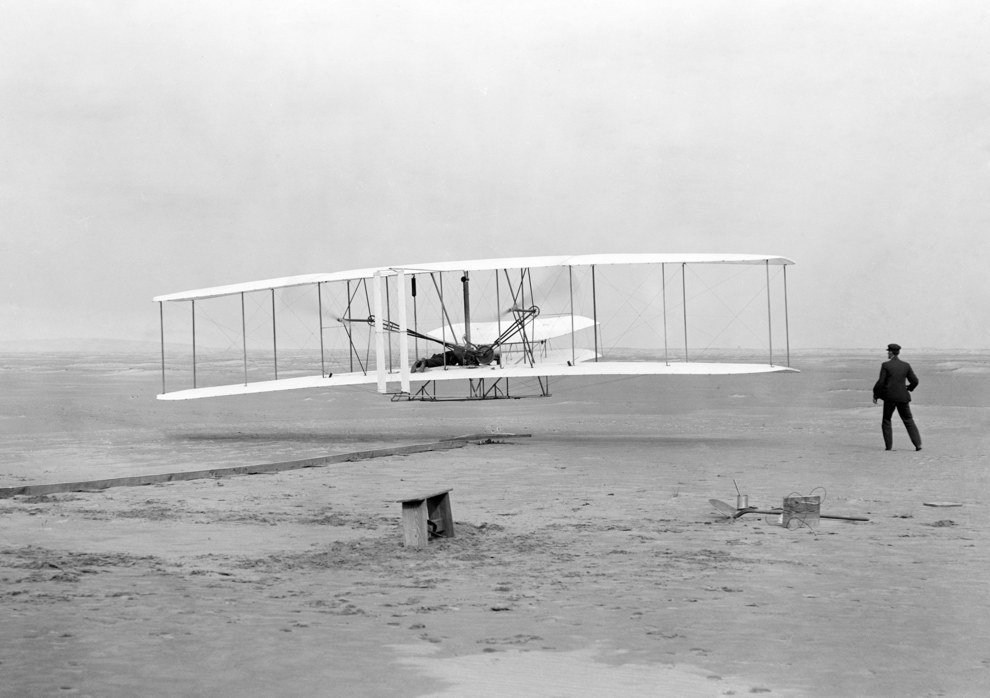
The Wright brothers, Orville and Wilbur, were two American brothers, inventors, and aviation pioneers. On December 17, 1903, at Kitty Hawk, North Carolina, the Wright Flyer became the first powered, heavier-than-air machine to achieve controlled, sustained flight with a pilot aboard.
|
|
|
5. Muhammad Ali and Sonny Liston 1965

The two fights between Muhammad Ali and Sonny Liston for boxing's World Heavyweight Championship were among the most anticipated, watched and controversial fights in the sport's history. Sports Illustrated magazine named their first meeting, the Liston–Clay fight, Ali had not yet changed his name from Cassius Clay, as the fourth greatest sports moment of the twentieth century.
The first bout was held in February 1964 in Miami Beach, Florida. Ali (then Clay) won when Liston gave up at the opening of the seventh round after being clearly dominated in the sixth. Their second fight was in May 1965 in Lewiston, Maine.
The ending of the second Ali-Liston fight remains one of the most controversial in boxing history. Midway through the first round, Liston threw a left jab and Ali went over it with a fast right, knocking the former champion down. Liston went down on his back. He rolled over, got to his right knee and then fell on his back again.
|
6. USA Beats Russia in 1980 Olympic Hockey

The "Miracle on Ice" refers to a medal-round game during the men's ice hockey tournament at the 1980 Winter Olympics in Lake Placid, New York, played between the hosting United States, and the defending gold medalists, the Soviet Union.
The Soviet Union had won the gold medal in six of the seven previous Winter Olympic Games, and were the favorites to win once more in Lake Placid. The team consisted primarily of professional players with significant experience in international play. By contrast, the United States' team led by head coach Herb Brooks consisted exclusively of amateur players, and was the youngest team in the tournament and in U.S. national team history. The US team played another game against Findland and won giving them the Gold Medal for the 1980 Olympics
|
7. WW2 Omaha Beach

Omaha Beach is a landing area in Normandy, northern France, used by Allied forces in the WWII D-Day invasion. Today, the beach is dotted with the remains of German bunkers. On the shore, the stainless-steel sculpture Les Braves commemorates American soldiers. Behind the beach is the Musée Mémorial d'Omaha Beach, also documenting the invasion. Nearby, the Overlord Museum displays WWII tanks, artillery and dioramas.
|
8. Famous Times Square Kiss
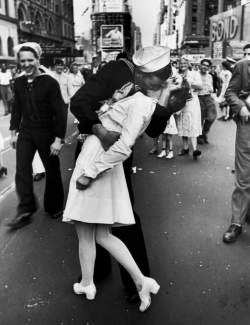
V-J Day in Times Square is a photograph by Alfred Eisenstaedt that portrays a U.S. Navy sailor grabbing and kissing a stranger—a woman in a white dress—on Victory over Japan Day in New York City's Times Square on August 14, 1945. The photo, published in LIFE, caught the U.S. at a moment of pure relief and represented people letting go of their inhibitions. Friedman - the female in the picture - was a 21-year-old dental assistant, out in Times Square when news of the war's end broke. George Mendonsa, who in 2015 confirmed he was the man in the photo, saw Friedman for the first time, spun her around and kissed her.
|
9. Moon Landing Neil Armstrong July 20, 1969

Apollo 11 was the spaceflight that landed the first two humans on the Moon. Mission commander Neil Armstrong and pilot Buzz Aldrin, both American, landed the lunar module Eagle on July 20, 1969, at 20:18 UTC. Armstrong became the first to step onto the lunar surface six hours later on July 21 at 02:56:15 UTC; Aldrin joined him about 20 minutes later. They spent about two and a quarter hours together outside the spacecraft, and collected 47.5 pounds (21.5 kg) of lunar material to bring back to Earth. Michael Collins piloted the command module Columbia alone in lunar orbit while they were on the Moon's surface.
|
|
|
10. Rev. Martin Luther King Jr.

I Have a Dream - is a public speech delivered by American civil rights activist Martin Luther King Jr. during the March on Washington for Jobs and Freedom on August 28, 1963, in which he calls for an end to racism in the United States and called for civil and economic rights. Delivered to over 250,000 civil rights supporters from the steps of the Lincoln Memorial in Washington, D.C., the speech was a defining moment of the Civil Rights Movement.
|
11. Boston Marathon Bombings
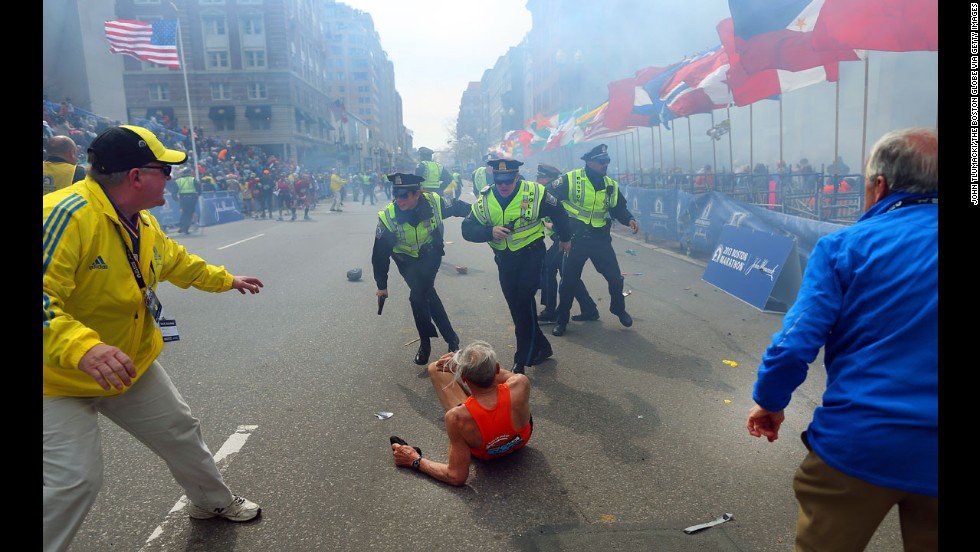
On April 15, 2013, two homemade bombs detonated 12 seconds and 210 yards (190 m) apart at 2:49 p.m., near the finish line of the annual Boston Marathon, killing three people and injuring several hundred others, including 16 who lost limbs.
On April 18 the Federal Bureau of Investigation (FBI) released images of two suspects,who were almost immediately identified as Chechen-American brothers Dzhokhar Tsarnaev and Tamerlan Tsarnaev. The brothers killed an MIT policeman, kidnapped a man in his car, and had a shootout with the police in nearby Watertown, during which two officers were severely injured, one of whom died a year later. Tamerlan Tsarnaev was shot several times, and his brother ran him over while escaping in the stolen car; he died soon after.
An unprecedented manhunt for Dzhokhar Tsarnaev ensued on April 19, with thousands of law enforcement officers searching a 20-block area of Watertown,residents of Watertown and surrounding communities were asked to stay indoors, and the transportation system and most businesses and public places closed. Around 6:00 p.m. a Watertown resident discovered Dzhokhar hiding in a boat in his backyard.He was shot by police while still in the boat and then arrested. Dzhokhar Tsarnaev was later sentenced to death.
|
12. Lee Harvey Oswald Shooting
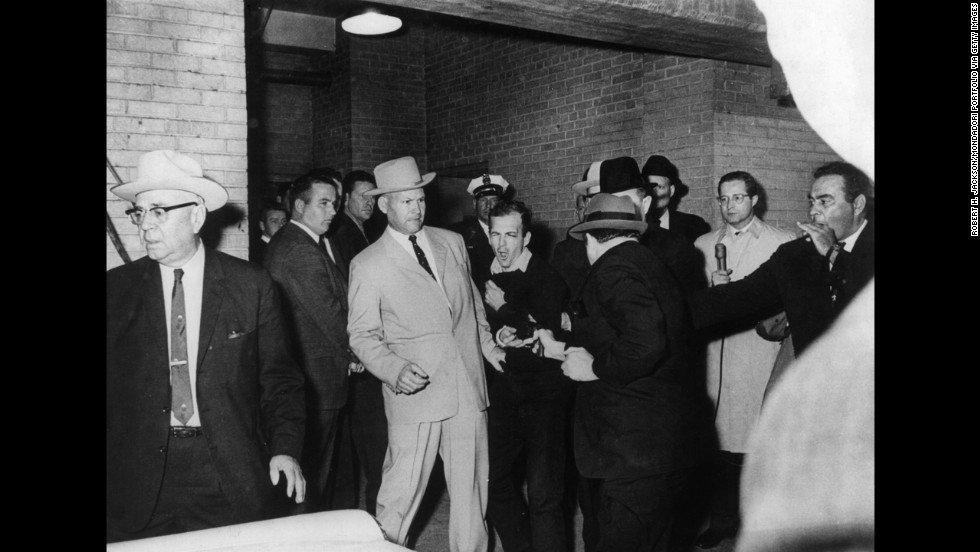
Lee Harvey Oswald (October 18, 1939 to November 24, 1963) was an American former U.S. Marine who assassinated President John F. Kennedy on November 22, 1963. According to four Federal government investigations and one municipal investigation,Oswald shot and killed Kennedy as the President traveled by motorcade through Dealey Plaza in the city of Dallas, Texas.
On Sunday, November 24, Oswald was being led through the basement of Dallas Police Headquarters toward an armored car that was to take him to the nearby county jail. At 11:21 a.m. CST, Dallas nightclub operator Jack Ruby stepped from the crowd and shot Oswald in the abdomen. Oswald was taken unconscious by ambulance to Parkland Memorial Hospital—the same hospital where doctors tried to save President Kennedy's life two days earlier. Oswald died at 1:07 p.m.
|
13. Robert Kennedy Assassination
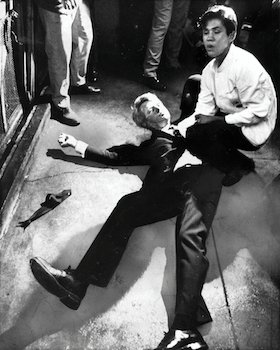
Robert Francis "Bobby" Kennedy (November 20, 1925 – June 6, 1968), commonly known by his initials RFK, was an American politician from Massachusetts. He served as the United States junior senator from New York from January 1965 until his assassination in June 1968. Kennedy was a member of the Democratic Party, and is seen as an icon of modern American liberalism.
In 1968, Kennedy was a leading candidate for the Democratic nomination for the presidency; he appealed especially to poor, African-American, Hispanic, Catholic and young voters. Shortly after midnight on June 5, 1968, after defeating Senator Eugene McCarthy in the California and South Dakota presidential primaries, he was mortally wounded by Sirhan Sirhan, a 24-year-old enraged Palestinian, and died the following day.
|
|
|
14. Dorothy Counts
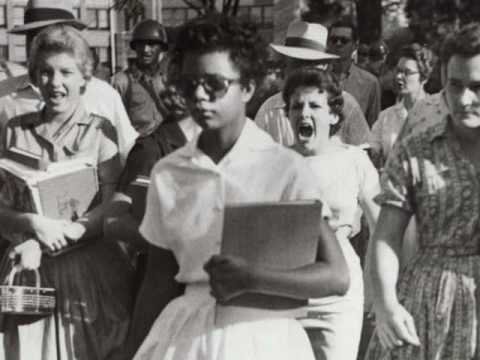
In 1956, forty black students applied for transfers at a white school. This was after the passing of the Pearsall Plan in North Carolina. At 15 years of age, on 4 September 1957, Dorothy Counts was one of the four black students enrolled at various all-white schools in the district; She was at Harry Harding High School, Charlotte, North Carolina. Three students were enrolled at other schools, including Central High School. The harassment started when the wife of John Z. Warlick, the leader of the White Citizens Council, urged the boys to "keep her out" and at the same time, implored the girls to spit on her, saying, "spit on her, girls, spit on her."Dorothy walked by without reacting, but told the press that many people threw rocks at her most of which landed in front of her feet and that many spat on her back.
|
15. Earthrise

Earthrise is a photograph of the Earth and parts of the Moon's surface taken by astronaut William Anders in 1968, during the Apollo 8 mission. Nature photographer Galen Rowell declared it "the most influential environmental photograph ever taken."
|
16. Babe Ruth
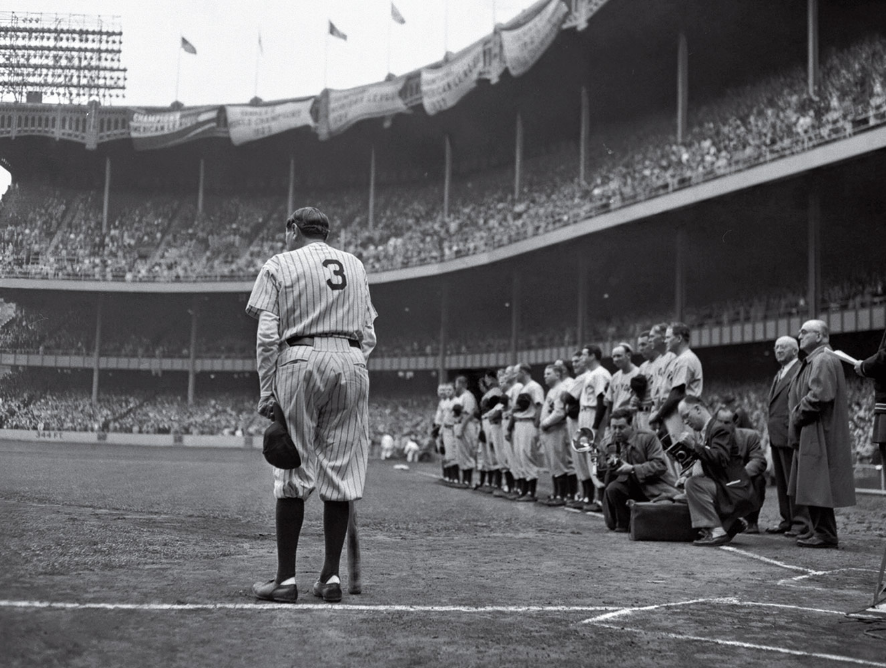
He was the greatest ballplayer of them all, the towering Sultan of Swat. But by 1948, Babe Ruth had been out of the game for more than a decade and was struggling with terminal cancer. So when the beloved Bambino stood before a massive crowd on June 13 to help celebrate the silver anniversary of Yankee Stadium,known to all in attendance as the House That Ruth Built, and to retire his No. 3, it was clear this was a final public goodbye .
Nat Fein of the New York Herald Tribune was one of dozens of photographers staked out along the first-base line. But as the sound of - Auld Lang Syne - filled the stadium, Fein got a feeling and walked behind Ruth, where he saw the proud ballplayer leaning on a bat, his thin legs hinting at the toll the disease had wreaked on his body. From that spot, Fein captured the almost mythic role that athletes play in our lives even at their weakest, they loom large. Two months later Ruth was dead, and Fein went on to win a Pulitzer Prize for his picture.
|
17. 9-11

The September 11, 2001 attacks (also referred to as 9/11) were a series of four coordinated terrorist attacks by the Islamic terrorist group al-Qaeda against the United States on the morning of Tuesday, September 11, 2001. The attacks killed 2,996 people, injured over 6,000 others, and caused at least $10 billion in infrastructure and property damage. Additional people died of 9/11-related cancer and respiratory diseases in the months and years following the attacks.
| |
















